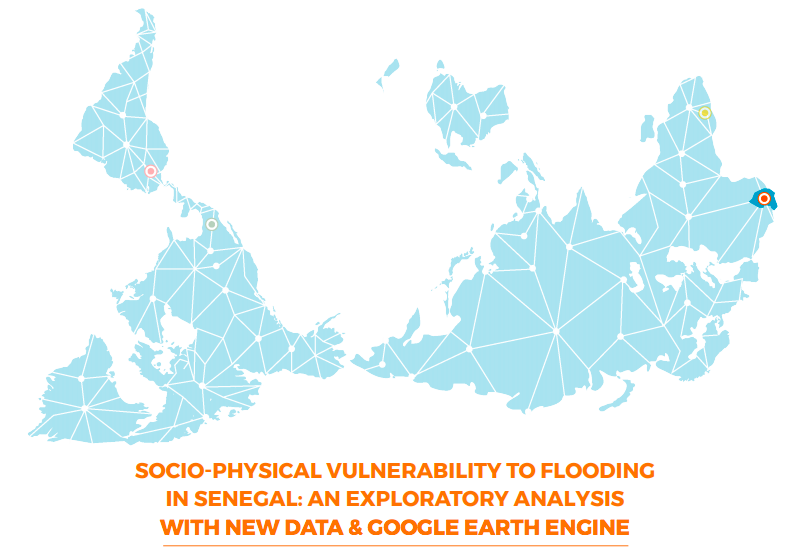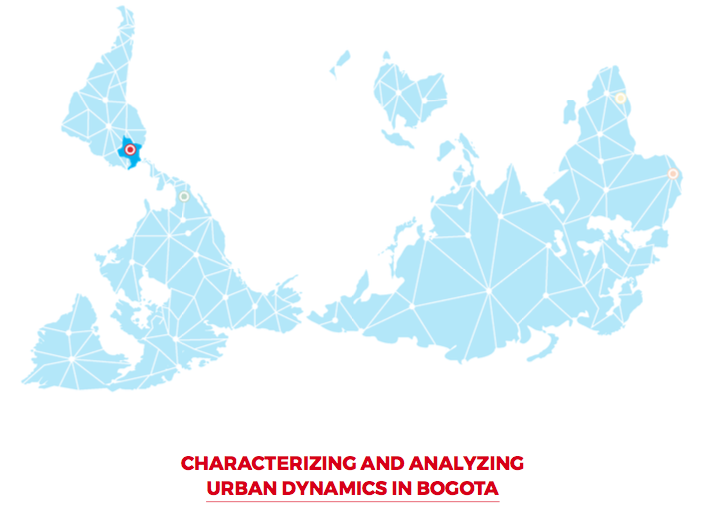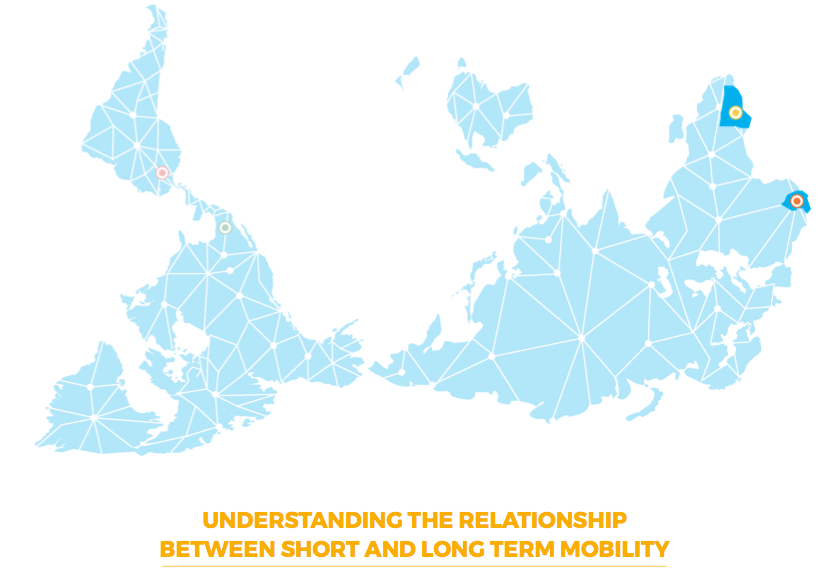Big Data to Address Global Development Challenges Paper Series
These 4 research papers were developed in collaboration with and funded by the Agence française de développement (AFD) between 2016 and 2019 under a joint program with Data-Pop Alliance and research partners. The aim was to strengthen the evidence-base for leveraging Big Data to address global development challenges in local contexts.
Individually, the papers show specific cases and examples of how computational analysis of behavioral data, combined with other datasets, can paint a finer-grained, more complex and dynamic picture of human reality than ‘traditional’ data allows, while also calling for prudence when attempting to draw system-wide conclusions on the basis of their findings. Collectively, they sketch the contours of a world where public decisions, in the form of policies and programs, may someday be designed, implemented and evaluated using the best available data and approaches.
Socio-Physical Vulnerability To Flooding In Senegal: An Exploratory Analysis With New Data & Google Earth Engine
Bessie Schwarz, Beth Tellman, Jonathan Sullivan, Catherine Kuhn, Richa Mahtta, Bhartendu Pandey, Laura Hammett, Gabriel Pestre
Each year thousands of people and millions of dollars in assets are a effected by flooding in Senegal; over the next decade, the frequency of such extreme events is expected to increase. However, no publicly available digital flood maps, except for a few aerial photos or post-disaster assessments from UNOSAT, could be found for the country. This report tested an experimental method for assessing the socio-physical vulnerability of Senegal using high capacity remote sensing, machine learning, new social science, and community engagement. This scientific approach to flood analysis developed in this report is far faster and more responsive than traditional flood mapping, but is only a fraction of the cost. First Cloud to Street’s customized water detection algorithms were run for several publicly available satellites (MODIS, Landsat) to map major floods from the last 30 years and second machine learning approach to hydrology in Google Earth Engine was trained on the maps of past floods. Third, a Principal Component Analysis, run on customize designed Census Senegal variables, revealed five underlying dimensions of social vulnerability to flooding. Overall, the research predicts a floodplain in Senegal of 5,596 km 2 , 30% of which is high-risk zone where over 97,000 people live. Approximately 5 million people live in the 30 arrondissements that have very high social vulnerability profiles compared to other arrondissements. In a future version, this risk platform could be set to stream satellite imagery public and other sensors, so that the vulnerability analysis for Senegal can be updated with the mere refresh of a browser page – no downloading is required.
Characterizing and Analyzing Urban Dynamics In Bogota
Marco De Nadai, Emmanuel Letouzé, Marta C. González, Bruno Lepri
Containing crime without affecting the livability of the urban environment is a major challenge in our society. Traditionally, researchers relate crime to socio-economic disorganization and people’s routine activity, as it influences effective control and suitable targets. An important open question is what the role the urban fabric plays. Although empirical research has shown that the physical urban environment is an essential factor for urban vitality and health, we lack evidence of any clear relationship between the structural characteristics (e.g. roads and land use mix) of neighborhoods and crime. Here, by using open data and mobile phone records, we explore this link with a spatial regression model that analyzes the environmental and the social conditions to which each part of the city is exposed. We found that physical characteristics of the city connected to higher urban diversity better explain the emergence of crime than traditional socio-economic conditions and, together, physical characteristics and socioeconomic conditions improve the performance of previous approaches. This result suggests that urban diversity and natural surveillance theories play an important role in the proliferation of crime, and the knowledge of this role can be exploited in urban planning to reduce crime.
Understanding The Relationship Between Short and Long Term Mobility
Sveta Milusheva, Elisabeth zu Erbach-Schoenberg, Linus Bengtsson, Erik Wetter, Andy Tatem
Populations are highly mobile, both in terms of long-term movements of individuals relocating their place of residence as well as shorter-term mobility such as commuting, seasonal travel and recreational trips. Working with call detail record data from Namibia and Senegal, we study population migration and its link to short term movement. We compare the short term mobility estimates extracted from call detail records to census data in the two countries and find a strong annual relationship, as well as distinct daily patterns in the relationship between long and short term movement. The relationship is strongest for holidays, and we find it to be consistent both across countries as well as across multiple years. In particular, we observe periods of increased travel on migration routes around holidays, with net short-term travel in the opposite direction of the direction of migration before the holiday and net travel in the same direction after. Using the Namibia data set, which spans several years, we investigate the link between short-term mobility and long-term relocation on an individual level, allowing us to gain insights into the mechanisms of interaction of short and long-term mobility. We find that it is common for individuals to both visit the place they will migrate to prior to migration and also visit their place of origin after migrating. Additionally, distance between the origin and destination of a migration has a significant influence on the probability of a short term trip associated with a long term move.
The Senegal dataset provides information on the full network of users, which we use to study the relationship between the location of network contacts and probability of traveling to those locations, investigating the importance of social contacts for mobility. We find that while the majority of social contacts in different regions can be explained by long-term migration patterns between regions, which in turn are linked to short-term movement patterns, social contacts can explain some of the additional short-term movement not captured by the long-term migration. We also find non-linear relationships between the probability of visiting a region and the number and strength of contacts, as well as between the duration of a visit and social contacts. These results can help inform evidence-based policies that target some of the negative externalities of short-term population movement such as spread of infectious disease, increased congestion, and inadequate infrastructure.
The Impact of Crime Shocks Across Gender and Socioeconomic Groups: A Large-scale Mapping Of Behavioral Disruption
Rodrigo Lara Molina, Alejandro Noriega, Eaman Jahani, Julie Ricard, Alex Pentland
In recent decades the world has seen a simultaneous trend towards becoming more peaceful overall, but also towards higher homicide rates surging in focal regions in the developing world. Although abundant research exists on the nature and sociology of crime, few studies look into the damaging impact of crime and violence on the daily lives of affected communities. The present study proposes the use of societal-scale behavioral data—card transaction metadata—to elicit such impact. On the crime side, we use detailed homicide records for an entire middle-income country to identify salient crime shocks at the local level. On the behavioral side, we use debit card transaction volumes throughout the country to extract behavioral indices. We show that crime shocks have a substantial effect on communities’ consumption patterns. Moreover, we show that the effects of crime shocks distribute differently across population subgroups defined by gender and socioeconomic status— e.g., with reductions of up to 7% in females’ average volume of transactions—potentially exacerbating social inequalities. We conclude this work with policy recommendations on the use of ‘big data’ sources to monitor and help.




